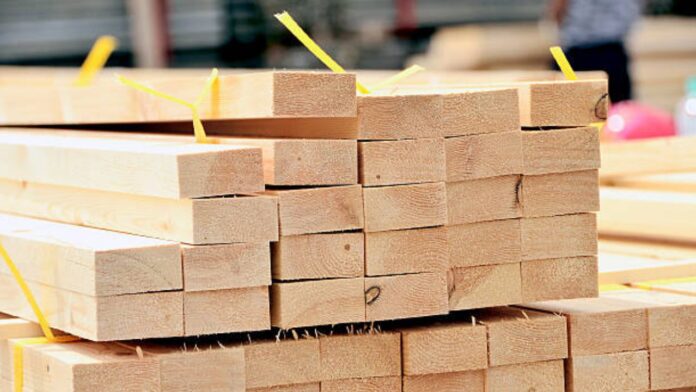Lumber and plywood are two essential building materials used in construction projects. They are used in everything from building homes to creating furniture. In this article, we will explore the basics of lumber & plywood, including their characteristics, types, and common uses.
Understanding Lumber
Lumber refers to the wood that has been cut and processed for use in construction. It is available in a variety of species, grades, and sizes, making it a versatile material for many applications. Some of the most common types of lumber include:
Softwood: Softwood lumber comes from coniferous trees such as pine, spruce, and fir. It is typically used for framing, decking, and outdoor construction.
Hardwood: Hardwood lumber comes from deciduous trees such as oak, maple, and cherry. It is often used for flooring, cabinetry, and furniture.
Pressure-Treated: Pressure-treated lumber is wood that has been chemically treated to resist decay and insects. It is commonly used for outdoor applications such as decking and fencing.
Engineered: Engineered lumber is made by bonding together wood fibers or veneers. It is often used for structural applications such as beams and joists.
Common Uses of Lumber
Lumber is used in a wide range of construction projects. Some of the most common uses of lumber include:
- Framing: Lumber is used for framing walls, roofs, and floors in residential and commercial buildings.
- Decking: Lumber is used to build outdoor decks, patios, and porches.
- Flooring: Hardwood lumber is often used for flooring in residential and commercial buildings.
- Cabinetry: Lumber is used to create cabinets for kitchens, bathrooms, and other areas of the home.
Understanding Plywood
Plywood is a type of engineered wood made from thin layers of wood veneers that are glued together. The layers are placed at right angles to each other, giving plywood its strength and stability. Plywood is available in a variety of grades and thicknesses, making it a versatile material for many applications.
Common Types of Plywood
There are several types of plywood available for different applications. Some of the most common types of plywood include:
Structural Plywood: Structural plywood is used for structural applications such as flooring, roofing, and walls.
Exterior Plywood: Exterior plywood is designed for outdoor use and is resistant to moisture and decay.
Interior Plywood: Interior plywood is used for interior applications such as cabinetry, furniture, and decorative paneling.
Marine Plywood: Marine plywood is designed for use in wet environments such as boats and docks.
Common Uses of Plywood
Plywood is used in a wide range of construction projects. Some of the most common uses of plywood include:
- Sheathing: Plywood is used as sheathing in walls, roofs, and floors to provide additional strength and stability.
- Cabinets: Plywood is commonly used to make cabinets for kitchens, bathrooms, and other areas of the home.
- Furniture: Plywood is used to create furniture such as tables, chairs, and bookcases.
- Decorative Paneling: Plywood is often used as decorative paneling for walls and ceilings.
Choosing the Right Lumber & Plywood
Choosing the right lumber and plywood for your project can be challenging. Here are some factors to consider when making your decision:
Strength: The strength of the lumber and plywood should be appropriate for the application. Structural applications such as framing and roofing require stronger materials than decorative applications.
Moisture Resistance: If the material will be exposed to moisture, such as in outdoor applications, it is important to choose a material that is resistant to moisture and decay. Exterior plywood and pressure-treated lumber are good options for these types of applications.
Size and Shape: The size and shape of the lumber and plywood should be appropriate for the application. For example, large beams may be needed for structural support, while smaller pieces may be suitable for decorative paneling.
Quality: The quality of the lumber and plywood can vary depending on the grade and manufacturer. It’s important to choose materials from a reputable supplier to ensure that they meet the necessary standards for your project.
Cost: The cost of lumber and plywood can vary depending on the type, size, and quality. It’s important to consider your budget when choosing materials for your project.
Conclusion
Lumber and plywood are essential building materials used in a wide range of construction projects. Understanding the different types and uses of lumber and plywood can help you choose the right materials for your project. When selecting lumber and plywood, it’s important to consider factors such as strength, moisture resistance, size and shape, quality, and cost. With the right materials, you can create a strong and durable structure that will last for years to come.









